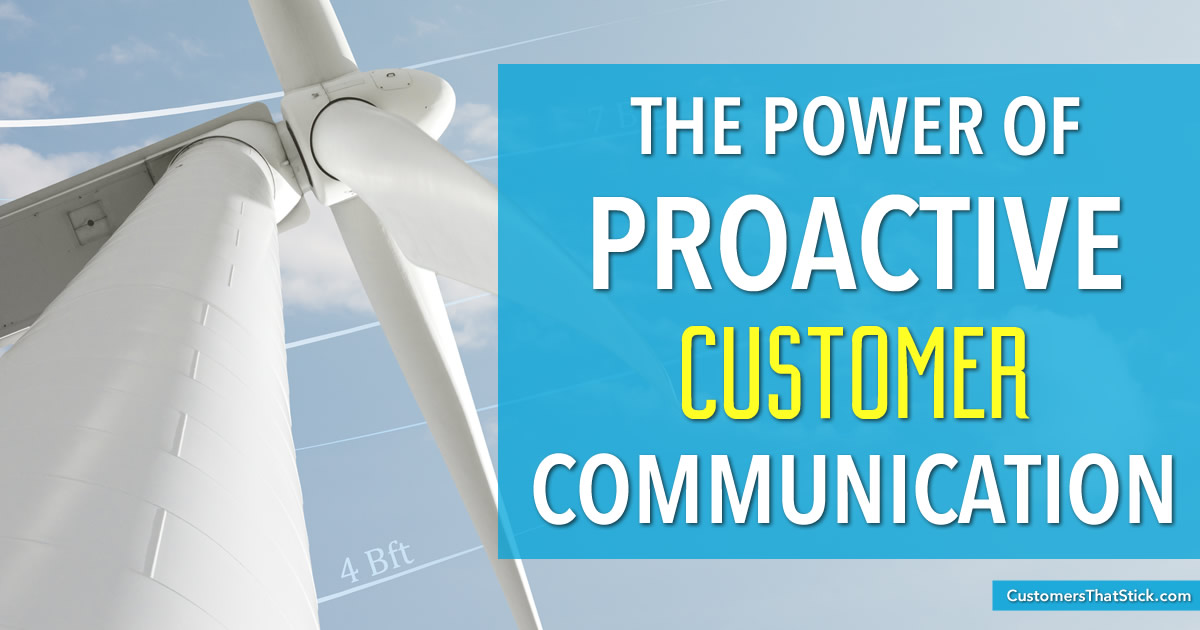
Proactive communication with customers is one of the most important customer service practices any organization or team can adopt.
Not only do you show customers that you care about them by checking in, you can also learn about their needs, desires, and preferences. In addition, you can potentially discover any negative feelings or emotions that that may be festering or growing and address them before they evolve into something more difficult to recover from.
As you’ve certainly read, a large portion of customers do not complain when they have a negative experience. In customer service, silent attrition is the silent killer.
Proactive contact can often uncover these hidden negative feelings and offer organizations the opportunity to resolve issues before they fester.
Proactive contact can often uncover negative feelings and offer the opportunity to resolve issues.
Imagine the difference between these two scenarios:
Scenario 1
A customer has a poor experience but doesn’t say anything. He is annoyed, and the customer relationship is damaged — but not enough for him to defect. He comes back again in a few months. The same issue, which is based on an expectations gap with this customer, happens again. Now, he is upset and ready to defect.
Scenario 2
This time, the customer receives a call soon after his experience asking about the experience and checking in to see if he needs anything else. He is able to let the rep know that the experience was not as smooth as it should have been, and the rep is able to walk through the issue, to help resolve the customer’s feelings, and to help lay the groundwork for smoother experiences in the future.
I think we can all agree that Scenario 2 is better than Scenario 1.
When I train frontline teams, I rarely have to sell them on how valuable proactive outreach can be; what they want to know is how they could ever have time to execute it.
I usually respond with a simple question:
How much time does resolving a customer issue take?
Every business and situation is different, so there is no way to quantify the difference in time a customer issue takes compared to a positive customer interaction. To help understand the return on investment of not just proactive service but of proactive issue prevention, I like to use the following guidelines.
Note: These guidelines are not based in formal research but in experience across decades of managing and observing customer issues in a wide variety of industries. The multipliers were created as a theoretical tool to illustrate the larger point.
How much time do customer service issues compared to a smooth experience?
What if some of the above could be prevented with a simple proactive phone call? What is the ROI of that simple action?
Now, I mention a phone call specifically because in these situations, an email or text message simply doesn’t have the same impact. Because they are so common, they don’t cut through the customer’s filters as well.
While surveys are a powerful tool, in my experience, they are the least effective way to reach those who had a bad experience but don’t like to complain, the very people that eventually defect quietly into that good night.
Phone outreach is certainly more challenging and expensive, but email and text simply cannot match the impact or the connection.
A reluctant customer might open up to a sincere team member in a human-to-human conversation whereas they are much less likely to do so when they receive yet another “tell us about your experience” email.
Proactive customer communication is not just about uncovering answers; it is about demonstrating care and concern.
Proactive customer calls are a great way to show you care!
With proactive outreach, most of the time you won’t uncover an issue; most of the time you will have a positive, rewarding interaction with the customer.
More importantly, customers are happy to hear from you and appreciate you reaching out. In the case of phone outreach, many will not have time to talk, but they’ll remember that you checked in and that your organization cared.
Proactive customer communication is one of the most powerful tools in the customer experience arsenal. Whether it be a “check-in” call or closing the loop on a service issue, investing a little time up front can often pay huge dividends.
© 2011-2025 CTS Service Solutions, LLC.
All rights reserved.
Legal Information | Privacy Policy
How to Cite this Site